How Joe Bonamassa dealt with the pressures of recording Royal Tea at Abbey Road
”Write the fucking songs! Abbey Road didn’t write the songs for The Beatles, The Beatles wrote the songs… they just happened to be at Abbey Road!“
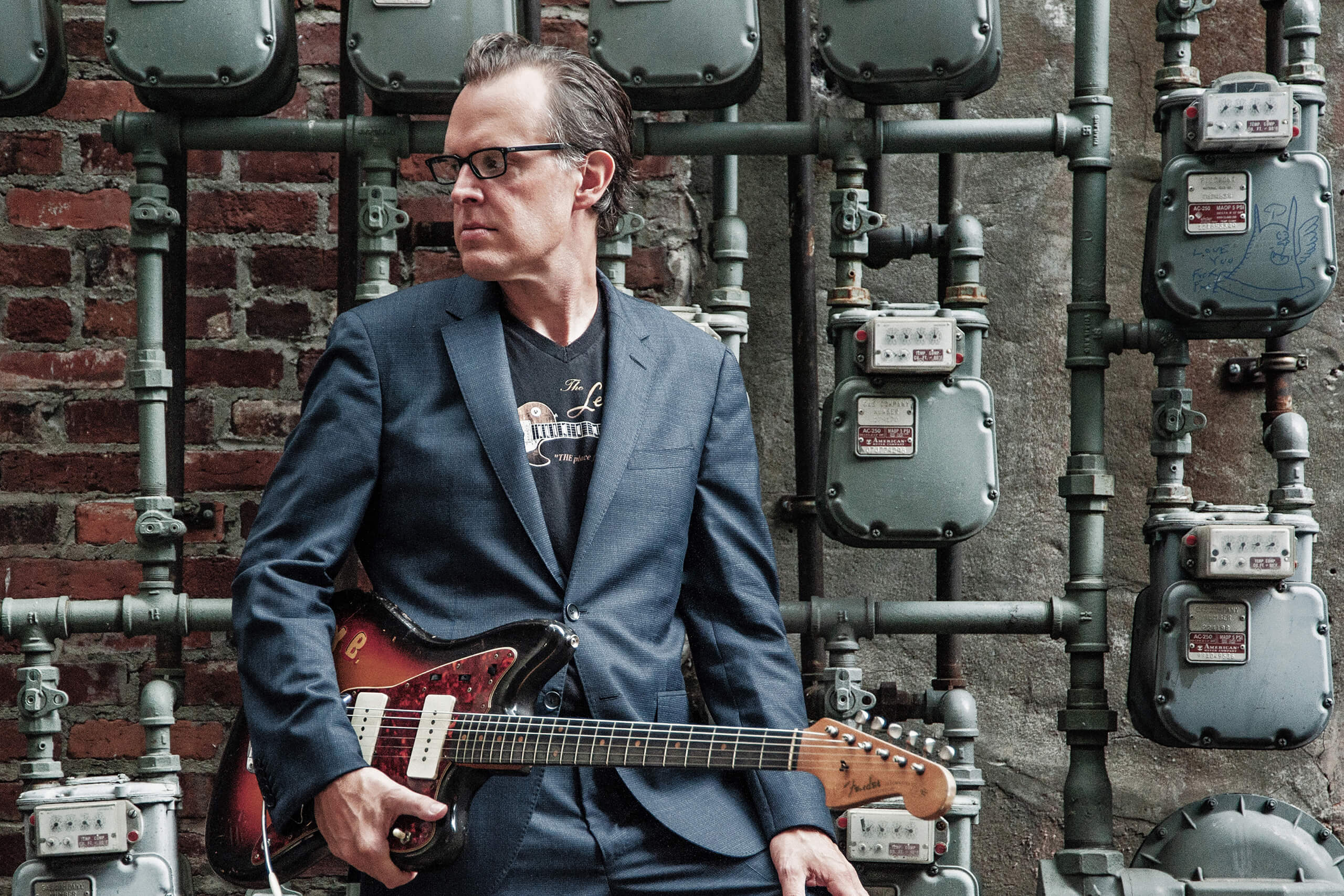
Joe’s pre-CBS ‘Joey B’ Jazzmaster – it’s easy to see why he felt he had to buy it when his friend Joe Menza from Best Guitars showed it
to him back in 2017. Image: Jim Herrington
When you’re two decades and 40-odd albums into your solo career, you’d be forgiven if you were running low on inspiration or fresh ideas for how to get the creative juices flowing. But Joe Bonamassa had no such issues – he was going to London to make a record, testing his hypothesis that an album’s sound is as much about where it’s written as it’s about what’s going on in your head at the time.
And that’s exactly what he did earlier this year, teaming up with Whitesnake legend Bernie Marsden, ex-Cream lyricist Pete Brown, Dave Stewart, Jools Holland and an all-star cast of collaborators at the legendary Abbey Road Studios to write and record the album that would become Royal Tea.

“I’m happy with the way it came out because travelling to London, writing the record with Bernie and Pete, and Jools and Dave… it did what it was supposed to do!” Joe reflects on the record at the other end of a Zoom call. “I hear the British influence just because I was in Britannia! I knew I wanted to do a record in London, and I always wanted to see if my theory played out, that if I immersed myself in British culture, it would make the music sound British. So I didn’t come in there with the idea of making a record that was a tribute to Eric Clapton or Peter Green or whoever – I wanted to make songs that sounded inherently like British blues-rock, y’know? And I think we accomplished that.”
How he ended up with this interesting cast of legends from various genres and backgrounds was a matter of serendipity as much as anything else, but it all started with Bernie.
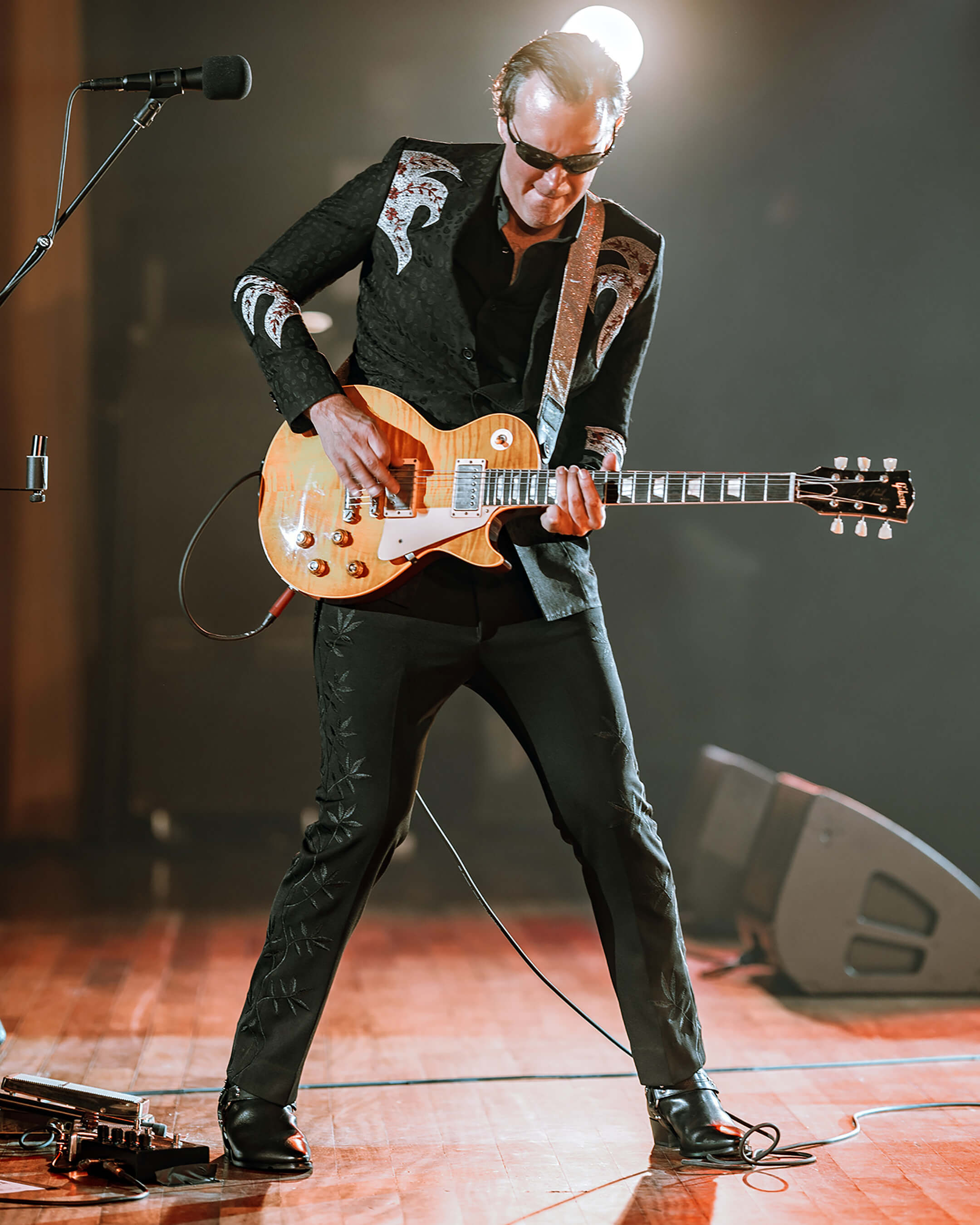
“We’ve always threatened to write together,” Joe says of his friend of more than a decade, and owner of one of Joe’s favourite ’59s. “I’ve always had the utmost respect for him as a musician – I would say underestimate Bernie Marsden at your peril, because as a singer he’ll kick your ass, as a player he’ll kick your ass and as a songwriter he’ll definitely kick your ass!”
It was Bernie that got Joe involved with ‘Cream Acoustic’ in 2018 – a project that paired Ginger Baker with a variety of famous musicians to record unplugged takes on Cream classics, and ultimately set the wheels in motion for Royal Tea.
“We were in Abbey Road Studio 2, and it was me, Bernie and Pete Brown, we’ve all known each other for years,” Joe remembers. “So I’m looking around and I thought, ‘Y’know what? This wouldn’t be the worst idea I’ve ever had…’ So I said the words out loud, ‘All three of us should make my next record in London.’ And they were like, ‘Yeah! That’d be great!’” A year later, the three were back in Abbey Road doing it for real.
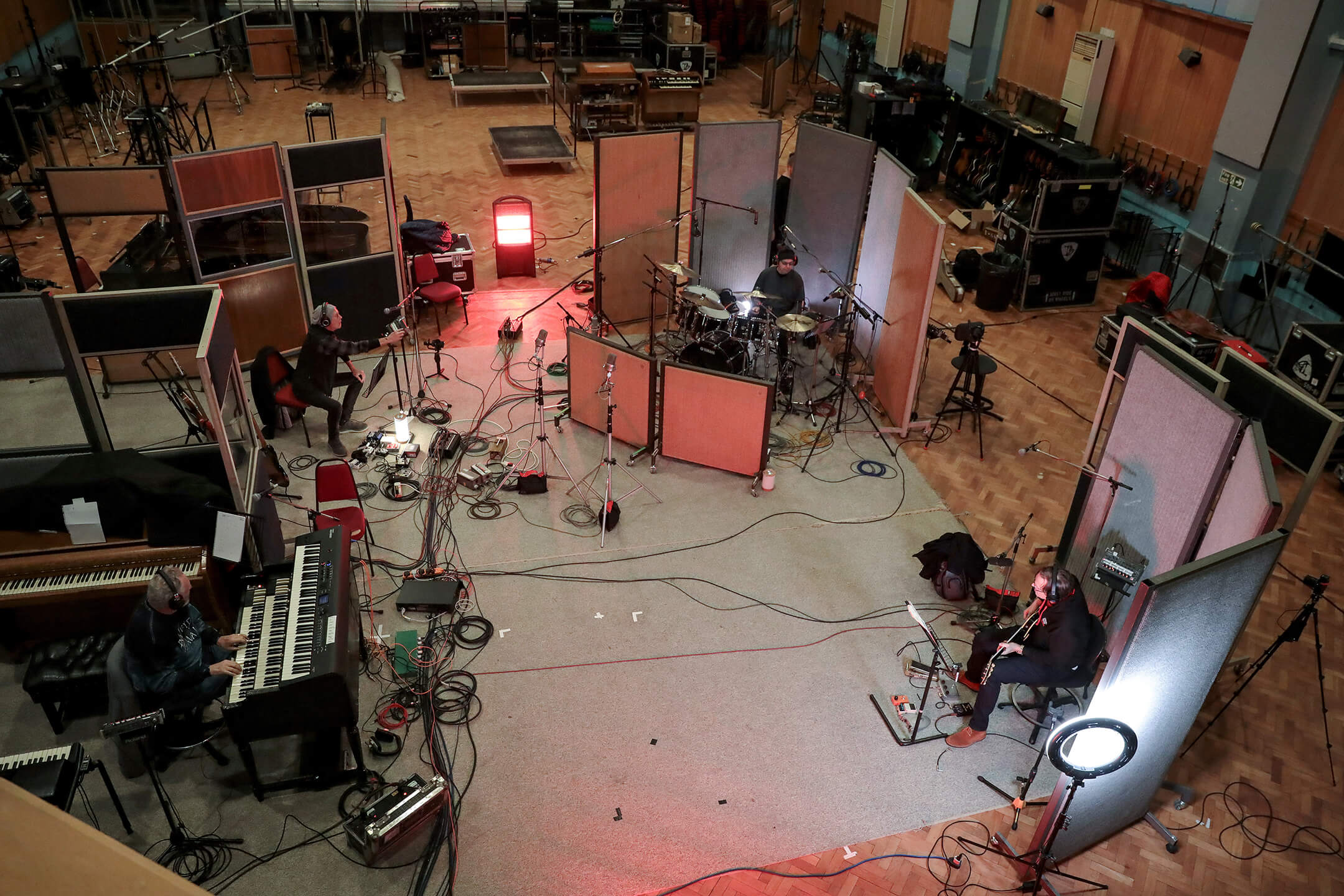
Road to somewhere
Holing up in the world’s most famous recording studio for more than a month is certainly a fine way to mark 20 years since his debut solo album, A New Day Yesterday – an album that was recorded in far less iconic surroundings, something that’s clearly not lost on Joe.
I never imagined I could do something like this 20 years ago,” he reflects. “That first record was recorded in Ithica, New York… which is not a bad place! But if you’d said to me 20 years ago that you’d be taking an Addison Lee to Abbey Road Studios and that’s your office for five weeks, I’d be like, ‘You’re out of your mind!’”
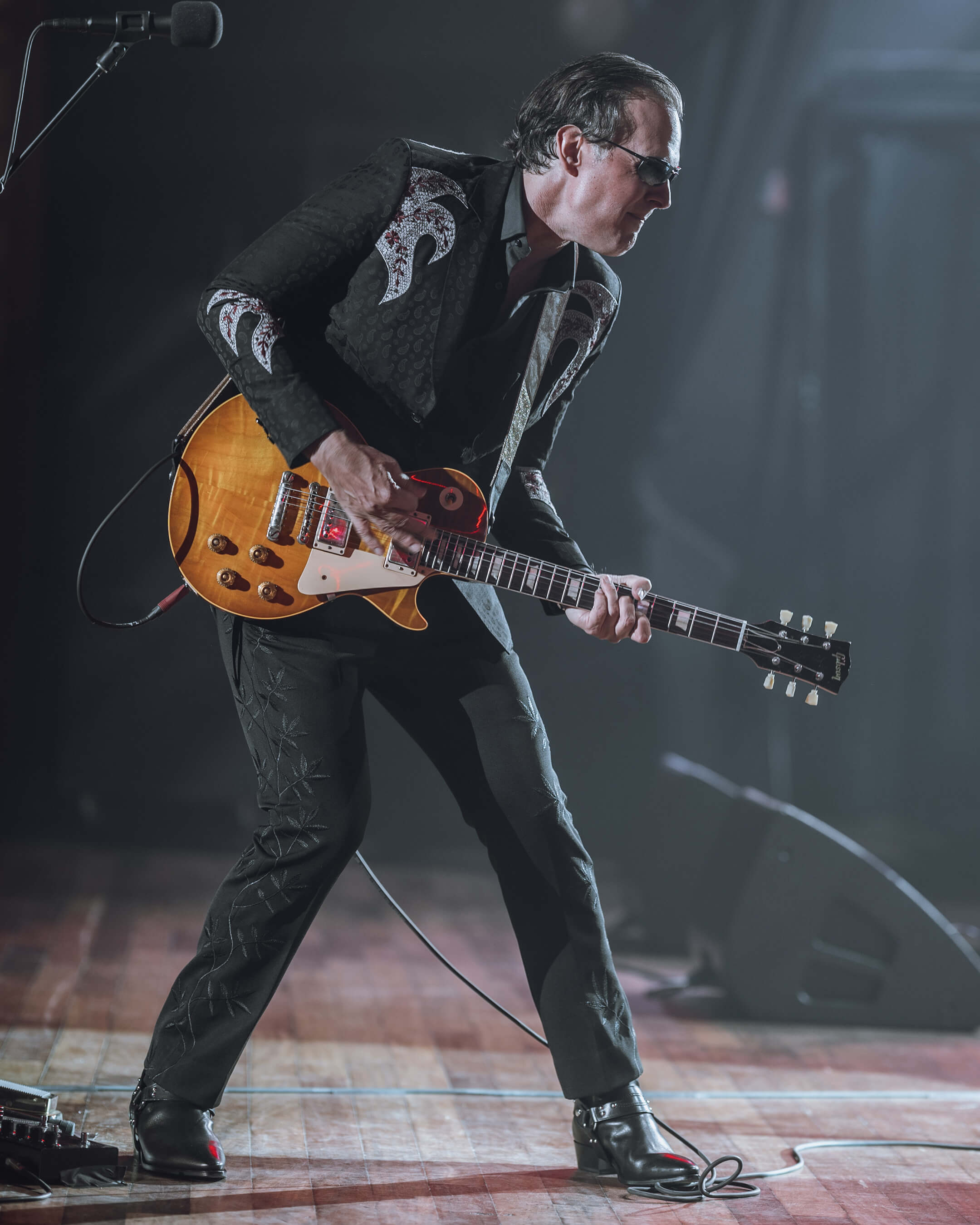
And given that, well… it’s Abbey bloody Road Studios, you’d expect that recording in the hallowed halls that birthed everything from Apache to Revolver to The Dark Side Of The Moon would add its own kind of pressure to the sessions, but for Joe that didn’t even come into the equation.
“Not to sound flippant, but no!” Joe exclaims. “And I’ll tell you why. I’ve played Peter Green’s Les Paul on stage at the Albert Hall, I’ve played Alvin Lee‘s guitar, Rory Gallagher‘s guitar, Clapton’s Blackie, the Hare Krishna 335… and what I’ve learned from that is that there’s one of two things that can happen – you can play the guitar how you want to play, or you can let the moment play you!
“Underestimate Bernie Marsden at your peril, because as a singer he’ll kick your ass, as a player he’ll kick your ass and as a songwriter he’ll definitely kick your ass!”
“It’s the same thing with a venue – you can play the Albert Hall, but do you want the Albert Hall to play you? And that’s how it was with Abbey Road. You walk in and yeah, you recognise Studio 2, you recognise that staircase, you know exactly what’s gone down – that’s the Hey Jude piano, there’s the EMI console that did Dark Side Of The Moon…’ I ran into my friend Nick Mason who gave me a tour of Studio 3 where they made that album, and I was like, ‘This is fantastic! Let me see the John Lennon Revolver mic again!’
“But guess what all of that will not do for you? Write the fucking songs! Abbey Road didn’t write the songs for The Beatles, The Beatles wrote the songs… they just happened to be at Abbey Road! Once you disconnect from that you just go, ‘Oh okay, we’re here to make a record’. And that’s pretty much how I looked at it.
“Yes, it was a great honour – we had a little office there where Bernie and I would write, and we were camped out there for weeks before we actually made the record. Is it really cool to be like, ‘I’m going to work today’ and walk through those doors, and see the lovely lady who makes the best tomato and cheese toastie you’ll ever have, and who has been working there since The Beatles recorded there? Yeah, it’s fantastic! All of it is GREAT. But that doesn’t take away from the fact that you’re there to work.”
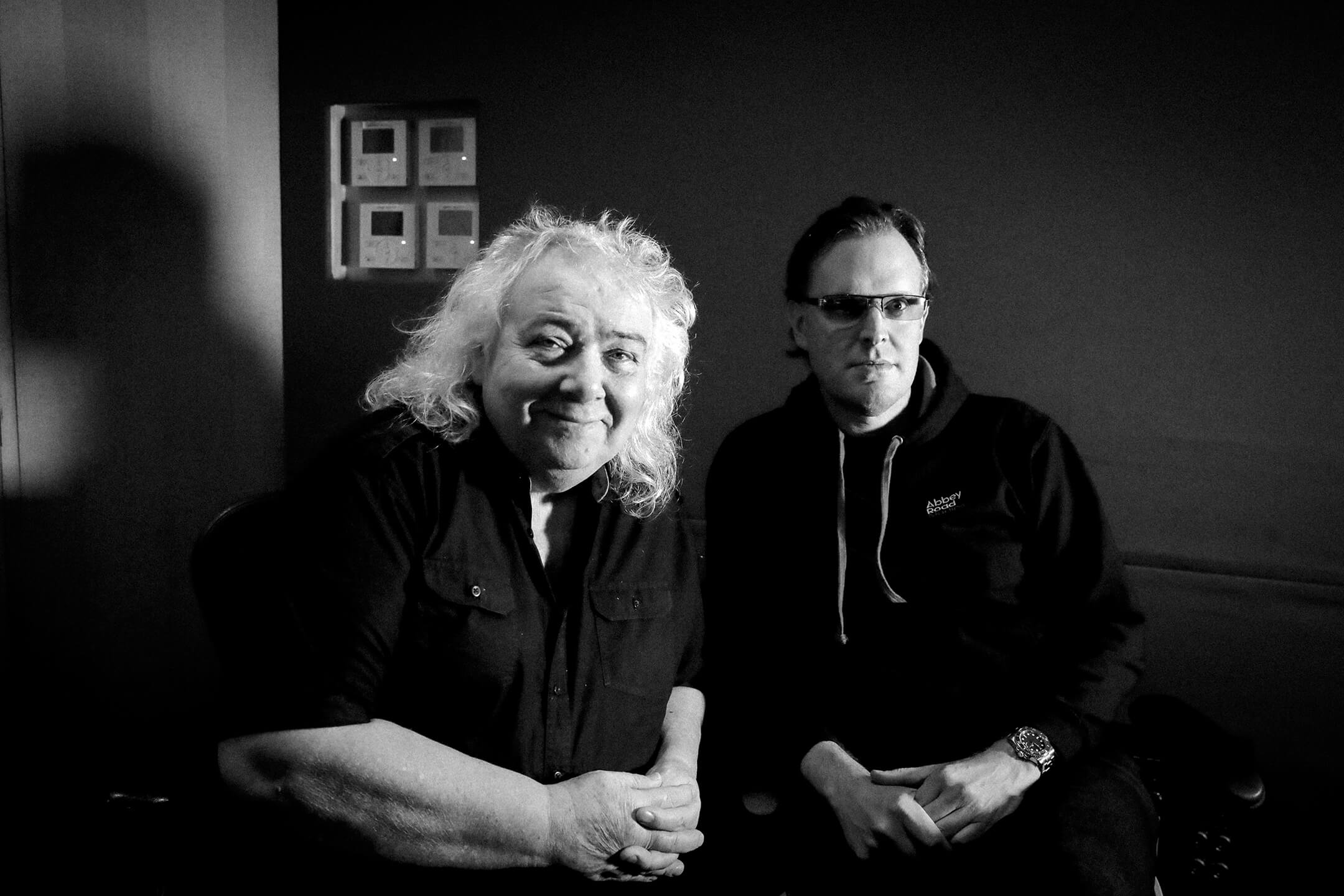
Lazarus arisen
When it came to tracking Royal Tea at Abbey Road, Joe had an enviable arsenal of guitars ready to roll, including the modded ’52 Telecaster that used to belong to British singer Terry Reid, but to really capture the ‘British’ vibe that the album was crying out for, Joe had to head out on one of his famous guitar safaris.
“Y’know I’ve never been a Brit amp guy, Marshalls excluded of course,” Joe explains. “I don’t have an Orange, don’t have a Hiwatt… I did have a Selmer Zodiac 30 once, but it always broke down and was a pain in my ass and expensive!
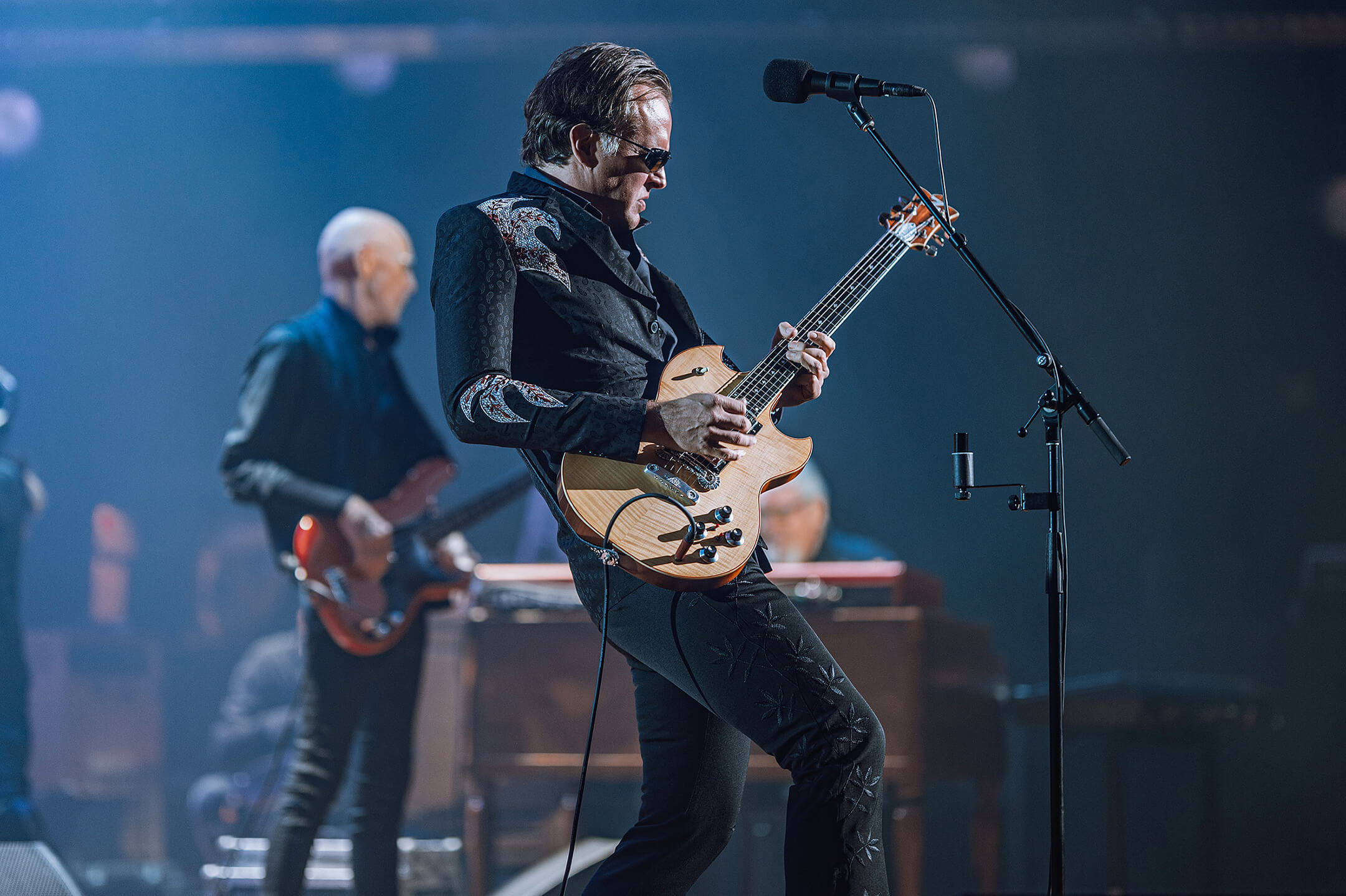
“So I took my friend Joanne Shaw Taylor and her dad on a guitar crawl when I was in London, and we went down Denmark St, and there was a shop there that sold mostly new guitars, but they had this Selmer Truvoice that I plugged in and it was just really rich and chewy, and it distorted well… it just sounded good! And it was relatively cheap – it was like, £700 or £800!”
With the Selmer, plus a Watkins Dominator and a Zemaitis purchased from New Kings Road Vintage Guitars on the way home, Joe was ready to bring the British tone to Royal Tea.
“They were incredibly useful in the studio,” he enthuses. “I was really thrilled with how useful they were – especially the Truvoice, that thing just kicked ass, and it’s in my living room right now!”
“You walk into abbey road and you recognise what’s gone down there. But guess what all of that will not do for you? Write the fucking songs. it’s great, BUT the fact is you’re there to work”
One other new addition to the sessions was a guitar that Joe had never even played before, but it was a special one indeed. Follower’s of Joe’s Instagram might remember seeing him post some pictures of a Les Paul-shaped object that had clearly seen better days, clumsily sprayed in a dark flat red, this guitar didn’t look like much, but underneath was lurking a bona fide 1959, which Joe had restored and brought back to its former glory, appropriately nicknaming the new guitar ‘Lazarus’.
“I hadn’t seen it done before I left for Abbey Road, and my guy Rick Gould was coming over. I’m not really a registered museum but I feel like it sometimes, and he’s the curator of my museum and everything else. So he was coming over to London and I was like, ‘Dude, bring the guitar, I really want to see it!’ I must have paid for somebody’s parking inadvertently or something, because I was so lucky to stumble on to that thing!
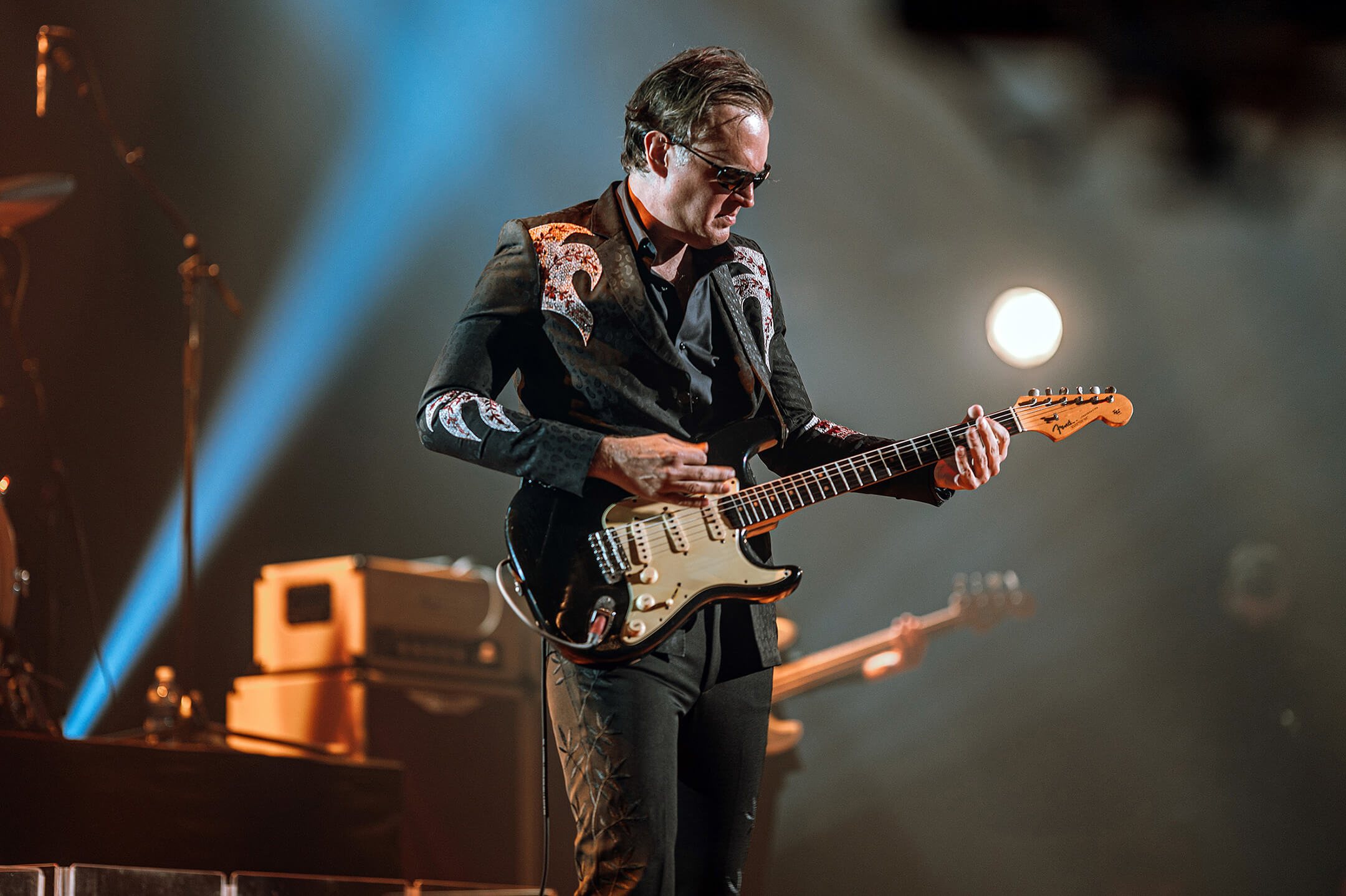
There’s a fair bit of serendipity about how Joe and the guitar came together. Joe first spotted the guitar on the Instagram of his friend, the LA luthier David Neely – sprayed and in pieces, the caption claimed it was an “alleged ’59”.
“I text him, ‘What the hell is that!?’ but he never got back to me,” Joe explains. “Then in December, we had this little guitar get together in North Hollywood, and I run into him and say, ‘David, good to see you man! Did you bring the red thing?!’ because people often bring stuff for show and tell at these events. And he says, ‘I was hoping you’d be here, I brought it for you to take a look at it, daddio!’
“At that point he’d stripped all the parts off and put it in a box, and he said, ‘The guy wants it restored, but he only wants to give me like a thousand dollars!’ So I took a look at this guitar, and at this point, it was still red – and when I say they’d painted it red, I mean they’d painted it red. They’d even painted over the binding! Everything was red except the holly veneer on the headstock, in the cavities and in the back cavity – and thank goodness! Because I looked at the neck tenon, and thought, ‘Well I like that!’ Then I looked at the holly veneer and the logo placement, I looked at the factory-large frets and think, ‘I like that!’ And I spin it around and look inside the cavity and look at the tube and where the ground wire is coming out and I like it all!
“if you’re buying a Joe Bonamassa record now, I have to assume you know that I know how to play the guitar… It means you don’t have to prove your worth every song”
“So I’m staring at the top trying to see if it’s got any kind of curl, or trying to see a seam and all these people, who are all guitar experts are chiming in – ‘No that’s a converted Goldtop’ ‘Oh it’s a ’68’ – and I’m thinking, ‘Yeah you guys keep talking, I’m gonna keep looking!’ And I decide I need to take a look at the parts to be sure.
“So I head down to David’s shop on Sunset Blvd and he pulls the box of parts and it’s two PAFs, two real M69s [pickup rings], all the tuners, the truss rod cover, the nickel hardware, the knobs, and I like it all. Then I take a look at the pots, and it’s the original harness, dated to the seventh week of 1959… and so I’m like, ‘Well if it walks like a duck and quacks like a duck, guess what it is?!’
“I didn’t realise that underneath the red was a monster fucking top, because the finish was so thick, but that was good luck for me! So I made the guy an offer through David, and by the time I had crossed the street and was getting into my car, David called back and said he’d take it, so I went back and picked it up, and that was it – the beginning of Lazarus!”
Looking back
With the right tools for the job, Joe and his friends set about making 45th album – longevity that gives him the freedom to be his authentic self, and shun the expectations that to live up to his ‘guitar hero’ reputation.
“The good thing about having had 44 albums out in 20 years is that if you’re buying a Joe Bonamassa record now, I kinda have to assume that you know I know how to play the guitar before you purchase!” He chuckles. “I’m trying not to sound flippant, but it allows you to truncate the solos to where you don’t have to prove your worth every fucking song! So I like the solo on Why Does It Take So Long To Say Goodbye – I think it’s got a really cool tone. It’s really dark and chewy, and it doesn’t sound like a typical Les Paul, but it still sounds like me!”
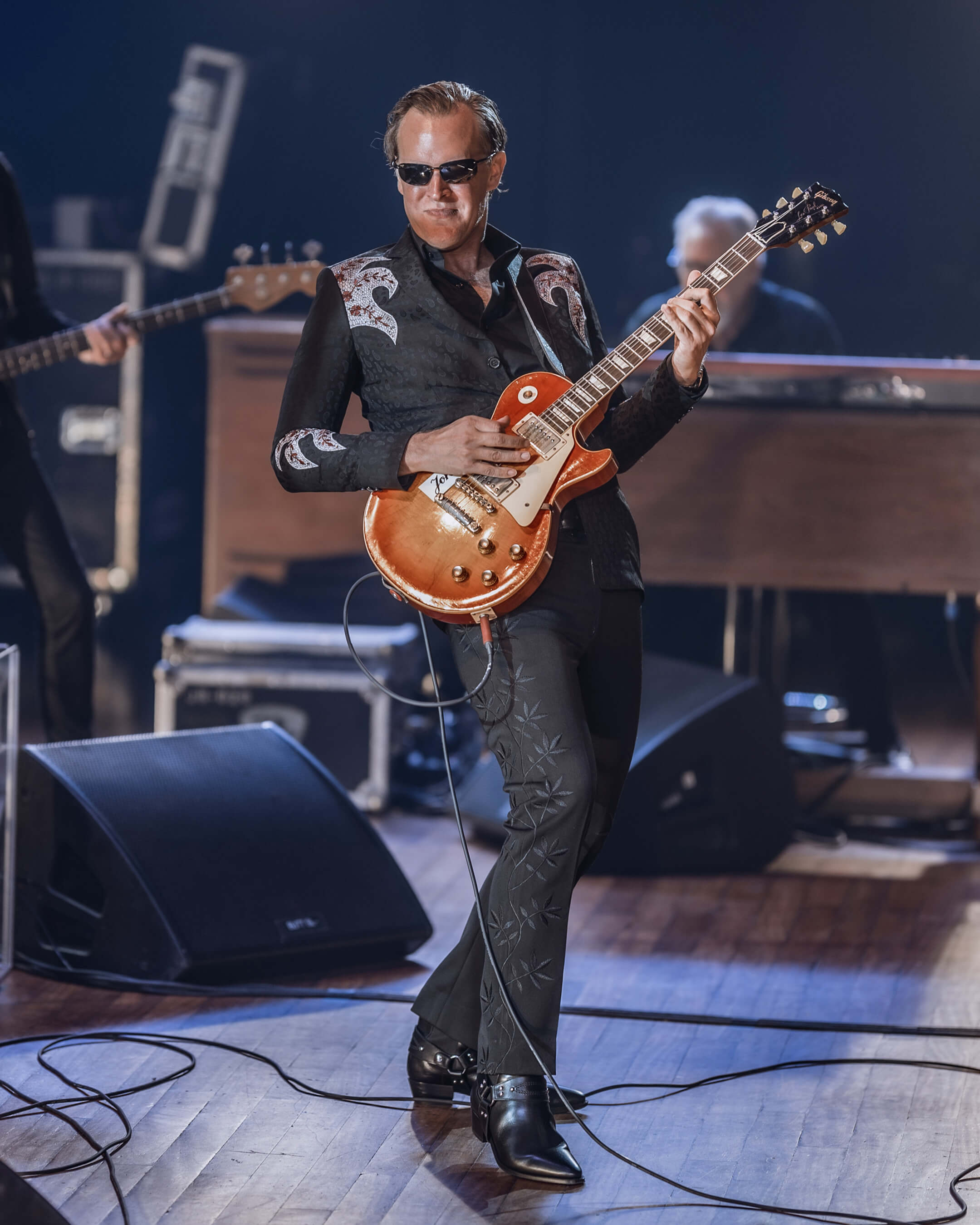
This isn’t Joe’s only album of 2020 either – his 44th album was a reissue of that debut LP, A New Day Yesterday, but rather than simply repackage the original, he went back and re-recorded all the vocals, as well as some of the guitar parts.
“It’s nice that my 44th and 45th albums are coming out almost tangentially, and the fact that they’re my first and my latest… it’s a good microscope to look through,” he admits. “You can say, ‘Yeah I have improved on things over the last 20 years!’
“I re-sang the reissue and there are some new guitars and it’s been remixed. There are new guitars on there not because I didn’t like what I played the first time, but simply because some of the tapes were lost! Kevin was like, ‘Oh the solo’s gone, there’s no solo on this song!’ And I’m like, ‘What do you mean?!’ So I thought it would actually be cool to revisit some of those. I think it’s an interesting concept for a reissue record because a lot of people will just remaster them, or tidy up the floor, but we actually put a new roof on it!”
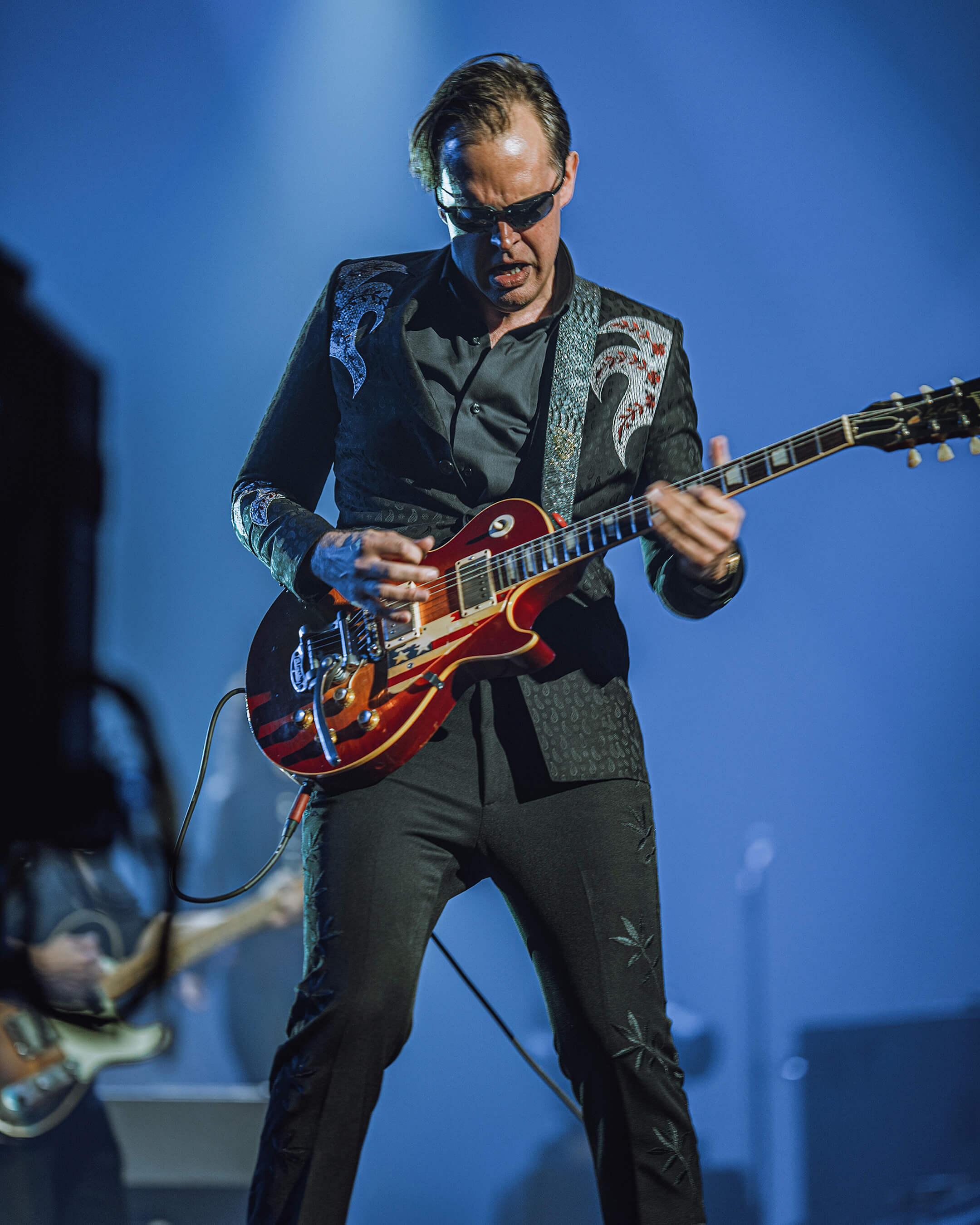
As for album 46? Despite the pandemic, it seems that the whole idea of writing albums dedicated to iconic cities and sounds has lit something of a fire under Joe…
“Assuming it comes off given everything that’s going on, we have studio time booked in New York City in January next year,” he explains. “There’s a whole bunch of songs that didn’t make this record purely because they didn’t sound British enough – they’re actually really good songs, they just wouldn’t fit this record, and would have sounded out of place.
“So we’re going to revisit those and write some new stuff for a record we’ll record in New York, and my concept is ‘’subway rigs’. So that’s no cartage, no road cases, just do what I used to do 20 years ago – a gigbag, with a Strat or a Les Paul, and a brown Deluxe or a Deluxe Reverb, and you go with what you’ve got! Making a record like that really tests the songs – when your palette of instruments isn’t infinite!”
Royal Tea is out now on Provogue/Mascot Label Group and J&R Adventures.
